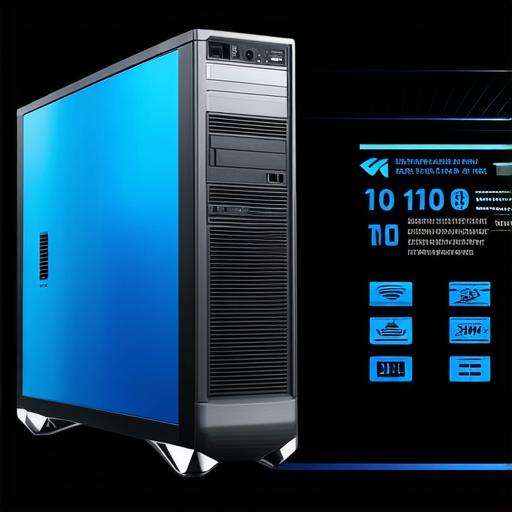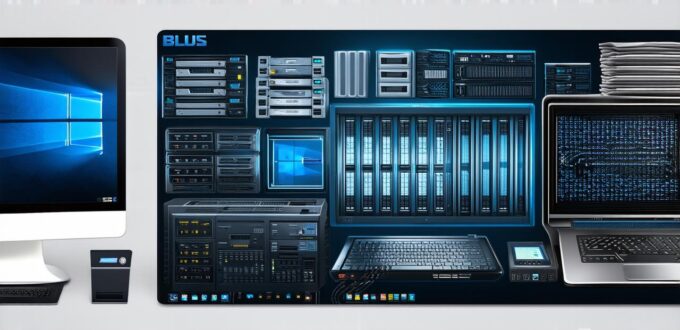Computer systems are the backbone of our digital age. From personal computers to supercomputers, they come in all shapes and sizes. In this article, we will explore ten different kinds of computer systems and their applications. We will also discuss how these systems can be optimized for performance, security, and usability.
1. Personal Computers (PCs)
Personal computers are the most common type of computer system. They are designed for individual use and typically come with a keyboard, mouse, and monitor. PCs range from basic models that cost less than $500 to high-end models that can cost thousands of dollars.
PCs are widely used in businesses, schools, and homes for tasks such as word processing, web browsing, and gaming. They are also popular among software developers who use them to write code, test software, and debug bugs.
2. Mobile Devices
Mobile devices are handheld computers that can be carried anywhere. They include smartphones, tablets, and wearable devices such as smartwatches. Mobile devices are becoming increasingly popular due to their portability and convenience.
Smartphones are the most common type of mobile device. They are designed for communication, entertainment, and productivity. Smartphones allow users to make calls, send messages, browse the internet, and use apps.
3. Supercomputers
Supercomputers are the most powerful type of computer system. They are designed for high-performance computing tasks such as scientific simulations, data analysis, and machine learning. Supercomputers are used in research institutions, government agencies, and large corporations to solve complex problems that would be impossible for a single PC or even a cluster of servers to handle.

4. Embedded Systems
Embedded systems are computer systems that are designed to perform a specific task or set of tasks. They are integrated into other devices such as cars, home appliances, and medical equipment. Embedded systems are typically small and have limited resources such as memory and processing power.
5. Cloud Computing
Cloud computing is the delivery of computing resources over the internet. It allows users to access software, data, and applications from anywhere in the world without having to own or maintain their own hardware or infrastructure. Cloud computing is often used by businesses to reduce costs, increase scalability, and improve collaboration among employees.
6. Artificial Intelligence (AI)
Artificial intelligence is a branch of computer science that focuses on creating intelligent machines capable of performing tasks that typically require human intelligence such as understanding natural language, recognizing images, and solving problems. AI systems are used in many different applications such as robotics, healthcare, finance, and transportation.
7. Cybersecurity
Cybersecurity is the practice of protecting computer systems, networks, and data from unauthorized access, theft, or damage. It involves a range of technologies and practices including firewalls, antivirus software, intrusion detection systems, encryption, and regular security audits.
8. Virtual Reality (VR)
Virtual reality is a technology that creates an immersive experience for users by simulating a 3D environment in which they can interact with objects and other people. VR systems use sensors such as cameras and accelerometers to track the movements of the user’s body and create a realistic environment.
9. Internet of Things (IoT)
The Internet of Things (IoT) refers to the interconnected network of physical devices that are embedded with sensors, software, and other technologies to collect and exchange data. IoT systems include everything from home appliances such as thermostats and light bulbs to industrial equipment such as manufacturing machines and transportation systems.
10. Quantum Computing
Quantum computing is a new type of computer system that uses quantum mechanics to perform calculations at incredibly high speeds. Quantum computers use qubits instead of classical bits to represent information, allowing them to perform many calculations simultaneously.
Conclusion:
In conclusion, there are many different types of computer systems available today. From personal computers to supercomputers, each system has its own unique characteristics and applications. Understanding these systems is important for software developers who need to choose the right tools and technologies for their projects. It is also important for businesses, governments, and individuals who rely on computer systems to perform critical tasks every day. As technology continues to evolve, it is likely that new types of computer systems will emerge, further expanding the possibilities of what we can achieve with computers.
